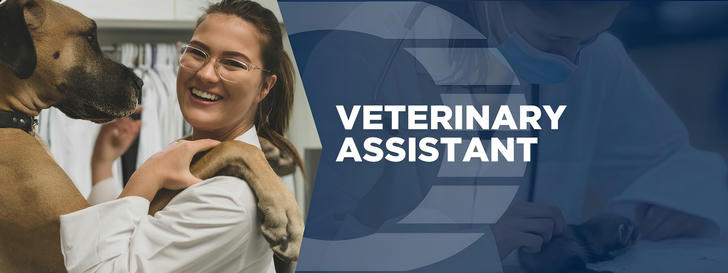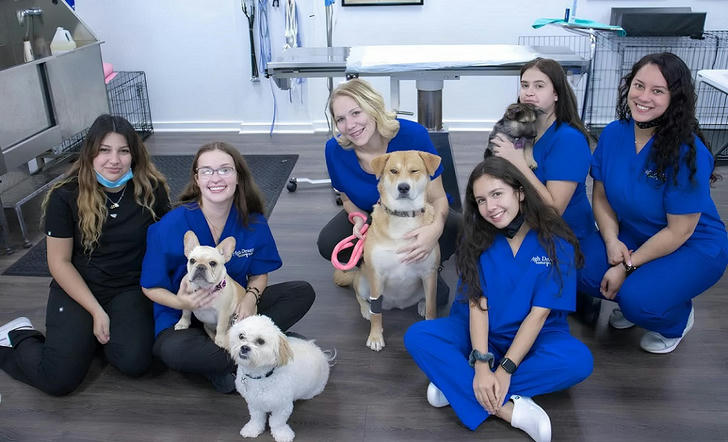Unleash Your Passion: A Guide to Veterinary Assistant Programs in the U.S.
Are you passionate about animals and dreaming of a career where you can make a difference every day? Becoming a veterinary assistant might be your calling! With the pet care industry booming—over 75% of U.S. households own a pet—the demand for skilled veterinary assistants is skyrocketing. Let’s explore what it takes to join this rewarding field, complete with real-world examples and actionable insights.

🌟 Why Become a Veterinary Assistant?
Veterinary assistants are the backbone of animal healthcare. They support veterinarians in clinics, hospitals, and research facilities, ensuring smooth operations and compassionate care. According to the Bureau of Labor Statistics, employment for veterinary assistants is projected to grow 19% by 2031, far outpacing the average for all occupations. Plus, with an average starting salary of $35,000–$45,000 annually (and up to $60,000 with experience), it’s a career that balances purpose and practicality.
📚 What to Expect in a Veterinary Assistant Program
Veterinary assistant programs blend classroom learning with hands-on training. Here’s a breakdown of what you’ll master:
1. Core Curriculum 🧪
Animal Anatomy & Physiology: Learn the basics of animal biology, from common breeds to vital systems.
Clinical Skills: Practice restraining animals safely, administering medications, and assisting in surgeries.
Diagnostic Support: Master lab techniques like blood draws, urinalysis, and X-ray positioning.
Client Communication: Develop skills to comfort worried pet parents and explain treatment plans.
Example: At Pima Medical Institute (Las Vegas), students rotate through simulated clinics, practicing everything from wound care to anesthesia monitoring.
2. Specializations 🐶🐱🐴
Many programs offer electives to tailor your career:
Small Animal Care: Focus on dogs, cats, and household pets.
Large Animal Medicine: Work with livestock or equine patients.
Emergency & Critical Care: Train for fast-paced ER settings.
Pro Tip: Programs like those at Cal Poly’s Animal Science Department emphasize hands-on experience at their on-site farms and clinics, giving students exposure to diverse species.
3. Certification & Licensing 📜
While not all states require certification, earning credentials like the Approved Veterinary Assistant (AVA) certification through NAVTA can boost your employability. For example, graduates from NAVTA-approved programs (e.g., Ross University) are often prioritized by employers.
💼 Real-World Training: Internships Matter!
Classroom knowledge is just the start. Most programs require 180+ hours of clinical externships to graduate. Here’s how this plays out in practice:
Case Study: Sarah, a student at Texas A&M, spent her externship at a Houston animal shelter. She assisted in spay/neuter surgeries, monitored post-op recovery, and even helped rehabilitate abused pets. This experience not only honed her skills but also led to a full-time job offer.
Shadowing Opportunities: Programs often partner with clinics like VCA Animal Hospitals, where students observe specialists in oncology, dentistry, and more.
🚀 Career Pathways & Success Stories
Veterinary assistants can advance into roles like veterinary technologist, practice manager, or even specialist assistant (e.g., in zoos or wildlife rehab). Let’s meet two professionals who started as assistants:
Dr. Emily Chen, DVM:
Emily began as a veterinary assistant at a small clinic in Colorado. The hands-on experience inspired her to pursue a Doctor of Veterinary Medicine (DVM) degree. Today, she runs a thriving oncology practice in San Francisco.
Jake Martinez, Certified Veterinary Technician:
Jake credits his externship at a dairy farm for his expertise in large-animal care. He now trains new assistants at a Montana veterinary college.

💡 How to Choose the Right Program
Not all programs are created equal. Here’s what to look for:
Accreditation: Ensure the program is NAVTA-approved or accredited by the AVMA.
Hands-On Labs: Facilities should include mock clinics, surgical suites, and diagnostic labs.
Job Placement Rates: Schools like Pima Medical Institute boast a 90%+ job placement rate post-graduation.
Flexibility: Many schools offer hybrid or evening classes for working students.
Red Flag Avoidance: Steer clear of programs that don’t require externships—real-world experience is non-negotiable!
🌈 The Bigger Picture: A Career of Compassion
Veterinary assistants don’t just care for animals—they’re advocates for their well-being. Take Maria Gonzalez, who volunteers at a mobile clinic providing care to low-income communities. “Every vaccine we give, every pet we save—it’s about giving families more time with their furry loved ones,” she says.
🎓 Ready to Take the Leap?
If you’re driven by empathy and crave a dynamic career, veterinary assisting offers endless opportunities. Programs like those at Pima Medical Institute or Cal Poly provide the tools to thrive in this field. Remember, every stitch, every vaccine, and every wagging tail starts with you. Embrace the challenge, and let your love for animals guide you to a career that truly matters. 🌟
